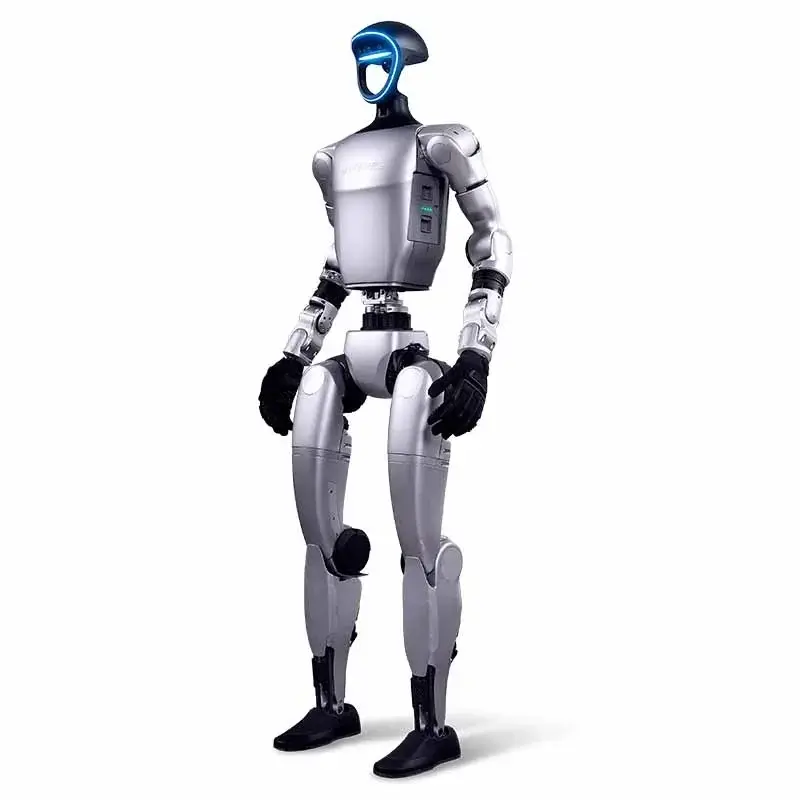Uncovering the power source: An introduction to CNC machine tool technology (an in-depth understanding of modern manufacturing)
The world of modern manufacturing revolves around precision, repeatability and efficiency. At the heart of this revolution lies a ubiquitous but often misunderstood technology: CNC machine tools. If you are involved in design, engineering, procurement, or are simply curious about how complex parts are realized from raw materials, understanding CNC machining is essential. This article will serve as your basic guide, explaining the core concepts and showing why advanced features are needed, e.g. Honglaite professional five-axis CNC machining servicesis a game changer.
What exactly is CNC machining?
CNC representative computer numerical control. At its core, CNC machining is a subtractive manufacturing process. This means that it starts with a solid block (or blank) of material (metal, plastic, wood, composite) and precisely removes the material layer by layer to achieve the desired final shape. Think of it as high-tech sculpting guided by a digital blueprint.
this "CNC" Part refers to the instructions sent to the machine tool. These instructions originate from a computer-aided design (CAD) model of the part. Specialized software (CAM software) converts the complex geometry of a CAD model into a precise series of coordinates, tool paths, speeds, feeds and other commands – detailed in nature "recipe" Called G code. The CNC machine tool controller reads this G-code and executes it with incredible precision, directing the movement of the cutting tool in multiple axes (X, Y, Z).
Core components of CNC machine tools:
- machine tool: The physical frame (mill, lathe, milling machine, grinder) is equipped with motors for moving tools and/or workpieces.
- Control unit (CNC controller): this "brain" It interprets G-code commands and controls the machine’s motors and actuators.
- Drives and motors: Convert electrical signals from the controller into precise mechanical movements (servos, stepper motors).
- Cutting tools: A variety of drill bits, end mills, inserts and other bits that perform the actual material removal.
- Workpiece clamping: Fixtures (vises, chucks, clamps, custom jigs) that securely hold raw materials during machining.
- Cooling system: Typically used to lubricate cutting tools, flush away chips, and control heat generated during cutting.
How CNC is changing manufacturing:
- Unparalleled precision and accuracy: CNC machines can achieve tolerances measured in microns (thousandths of a millimeter) that cannot be matched consistently by hand. This is critical for aerospace, medical devices, semiconductors and countless high-performance applications.
- Typical consistency and repeatability: Once a program is validated, CNC machines can produce thousands of identical parts with minimal changes. Quality control is built into the process.
- Complex geometries are possible: Complex curves, lumens, undercuts and complex 3D surfaces that would be extremely difficult or impossible with manual methods or simpler automation are common with CNC.
- Improve efficiency and productivity: CNC machines run continuously 24/7, often with automation (robotic part loading/unloading), which can significantly reduce production time and labor costs per part compared to manual machining.
- Improve security: Operators interact primarily with computers and software, minimizing direct contact with cutting tools and moving parts during operations.
- flexibility: While tooling needs to be changed and set up, switching to a different part design primarily involves loading a new program, allowing for a relatively quick changeover for series production.
Evolution: multi-axis machining
Early CNC machine tools operated primarily on three linear axes (X, Y, Z – left/right, front/back, up/down). While powerful, accessing complex functionality often requires multiple setups and repositioning of parts, introducing potential errors and increasing lead times.
Enter the game changer: multi-axis CNC machining. This refers to a machine that contains a rotating axis also Standard X, Y and Z motion.
- 3 axis: standard. Move the tool relative to the workpiece in the X, Y, and Z directions. Suitable for parts where all features are accessible from one side/angle.
- 4 axis: Adding an axis of rotation (often called the A-axis) usually allows the workpiece to rotate about the X-axis (incremental or continuous). Ideal for machining features on different faces or around a cylinder.
- 5 axis: **The cutting edge of capabilities. * Add a second axis of rotation (often called the B-axis or C-axis). This allows the tool to approach the workpiece from almost any direction In a single setting*. Key benefits include:
- Complex parts capabilities: Seamlessly machine highly organic shapes, deep cavities and undercuts.
- Single setup production: Eliminate errors caused by repositioning and significantly reduce overall delivery time.
- Excellent surface finish: Optimal tool contact and orientation minimizes witness lines and results in a smoother finish.
- Extend tool life and efficiency: Maintain optimal cutting angles and avoid plunge cuts, reducing tool stress and wear. Shorter tools can often be used to increase rigidity.
- Higher precision: Better access reduces cumulative tolerance errors across multiple settings.
Glowing advantage: professional five-axis CNC control
This is where expertise becomes crucial. Having a state-of-the-art five-axis CNC machine is just part of the equation. Realizing its full potential requires deep technical knowledge, meticulous programming, skilled operation and strict quality control.
Honglaite is a professional five-axis CNC machining manufacturer Dedicated to solving complex metal part manufacturing challenges. Not only do we have advanced equipment; we have mastered the production technology that supports it. This is what sets us apart:
- Advanced five-axis capabilities: We invest in and maintain state-of-the-art five-axis machining centers, ensuring we have the technical capabilities to handle your most demanding geometries.
- Material mastery: "Most materials can be quickly customized and processed." Whether it is challenging aerospace alloys (titanium, Inconel), hardened tool steels, engineering plastics or specialty composites, our team has the expertise and metallurgical knowledge to select the best parameters to process them effectively and efficiently.
- One-stop solution: In addition to mechanical processing, Honglaite provides one-stop post-processing and finishing services. This includes heat treatment (annealing, hardening, tempering), precision grinding, sandblasting, anodizing (Type II and III), electroplating, painting, powder coating, assembly, etc. We manage the entire process chain, simplifying logistics and ensuring seamless quality control throughout.
- Fast customization and precision: "For custom precision machining…customize your precision parts today." Our focus on efficient workflows and advanced programming allows for quick turnaround on custom projects without compromising the stringent precision requirements critical to high-performance applications.
- Value-driven efficiency: "Honglaite five-axis CNC machining is the first choice…with the best price!" By maximizing five-axis efficiency (reducing setups, optimizing tool paths), mastering materials, and providing integrated post-processing, we deliver exceptional value – optimizing part cost without sacrificing quality or accuracy.
in conclusion
CNC machining is the cornerstone of modern precision manufacturing, capable of transforming digital designs into tangible parts with unparalleled precision and efficiency. Moving beyond three axes unlocks the technology’s true potential, enabling the creation of complex, high-performance components in a single setup.
It’s critical to choose a partner who understands both complex machinery and the intricate nuances of materials, programming and finishing. Honglaite as a professional leader in five-axis CNC machiningprovides not only cutting-edge equipment, but also the expertise and comprehensive services needed to solve challenging metal part manufacturing problems efficiently and cost-effectively. From rapid prototyping to complex production runs, we enable you to confidently bring your most ambitious designs to life.
FAQ: CNC Machining and GreatLight Services
- What materials can be processed by Honglaite CNC?
- We specialize in a variety of metals, including aluminum alloys (2024, 6061, 7075, etc.), stainless steel (303, 304, 316, 17-4PH, etc.), steel alloys (1018, 4140, 4340, tool steel), titanium (grade 2, 5), copper, brass, bronze and specialty alloys such as Inconel, Hastelloy, and Kovar. Also accommodates many engineering plastics. For specific material inquiries, please contact us.
- What is the accuracy of five-axis CNC machining?
- High-quality five-axis machining, like the one performed by GreatLight, often maintains tight tolerances ±0.0004" (0.01mm) Or even finer for critical features, depending on part size, geometry and material stability.
- What are the main advantages of using a five-axis CNC compared to a three-axis CNC?
- Key benefits include: fabrication of highly complex shapes that would otherwise be impossible, greatly reduced lead times by eliminating set-ups, improved surface finish and accuracy by maintaining optimal tool positioning, the potential for shorter/rigid tools, and extended tool life.
- What file format do I need to provide for a CNC quote?
- We prefer 3D CAD models "step" file formats (e.g. .STEP, .STP) because they contain precise geometric data. 2D drawings in PDF or DXF/DWG format are also valuable additions, clearly specifying critical dimensions, tolerances, materials and finishes.
- What organizing services does GreatLight offer?
- We offer a comprehensive one-stop solution for post-processing, including heat treatment (annealing, quenching, tempering), precision grinding (surface, OD/ID), sandblasting/blasting, chemical conversion coating (chromate, alodine), anodizing (Type II and III hardcoats in various colors), electroplating (electroless nickel, zinc, cadmium, chromium), spray painting, powder coating, laser marking, vibration finishing and assembly/packaging.
- How does Gretel ensure quality?
- Quality is crucial. We implement strict process controls, utilizing advanced process monitoring technology where applicable, and perform thorough final inspections using coordinate measuring machines (CMMs), optical comparators, precision gauges, surface finish testers and material certification verification to ensure parts meet or exceed specifications.
- How quickly can GreatLight deliver custom CNC machined parts?
- Speed is one of our core strengths. We pride ourselves on our quick turnaround times. Factors affecting lead times include part complexity, quantity, material availability and finishing operations required. Contact us directly with your project details (support@greatlightmfg.cn) to get an accurate and competitive quote and estimated timeline tailored to your specific needs.









































